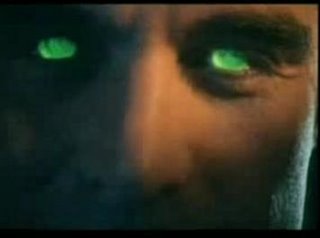| In 1931, the Admiralty reviewed the status of the Singapore Naval Base, considered a cornerstone of British Defence policy in the Far East since 1918. After the Great War, the British government devoted significant resources into building a naval base in Singapore, as a deterrent to the increasingly ambitious Japanese Empire. Originally announced in 1923, the construction of the base proceeded slowly until the Japanese invasion of Manchuria in 1931. The blueprint for the new base was a dock covered 21 square miles - then the largest dry dock in the world, the third-largest floating dock, and enough fuel tanks to support the entire British navy for six months. It was to be defended by heavy 15-inch naval guns stationed at Fort Siloso, Fort Canning and Labrador, as well as a Royal Air Force airfield at Tengah Airbase. Winston Churchill touted it as the "Gibraltar of the East." Yet the invasion of Manchuria changed everything, and the Admiralty recognised that a supposedly impregnable "Bastion of the Empire" would also bring great vulnerability to British prestige in the Far East. Instead, resources were reallocated to the Indian and Australian Navies, which when completed in 1939, arrived at a staggering cost of GBP60 million |
 Snake Eyes | In 1963, planning the shot from the sixth floor of the Texas School Book Depository the strange being known as Snake Eyes realises immediately that the assassin will have almost no chance to escape. Since no other building in the area has the right vantage on the motorcade, his position will be revealed as soon as the shots are fired. Furthermore, with so many policemen around, he could be sure that the building will be surrounded and sealed up before he can possibly reach an exit on the ground floor. Nor—since the School Book Depository occupies a whole block, with a parking lot in back and no contiguous construction—was there any way of escaping through the roof. |
| It will be necessary to lead the Dallas Police on a wild goose chase, figures Snake Eyes, giving the assassin time to slip away whilst the patsy is under arrest. | |
| In 1872, a 103-foot, 282-ton brigantine set sail for Genoa, Italy. The ship was built on Spencer's Island, Nova Scotia in 1861 and originally named the Amazon. Due to misadventures and bad luck, she had changed hands several times before being renamed the Mary Celeste in 1869 after a sale for $3,000. |  Mary Celeste |
| On-board was a cargo of 1701 barrels of industrial alcohol shipped by Meissner Ackermann & Coin of New York City to H. Mascerenhas and Co., of Genoa, Italy valued at $34,000.The ship was last seen in the Azores on November 22nd, where the the cargo was off-loaded and secretly shipped back to New York. The Celeste was sunk and the $34,000 pocketed by the shippers, in a traditional maritime insurance fraud. | |
 Lenin | In 1917, in Petrograd, Russia Bolshevik leaders Vladimir Lenin and Leon Trotsky lead revolutionaries in overthrowing the Provisional Government. It was all for nothing, German High Command exploited the internal uncertainty to launched a ferocious assault on Western Russia. By Christmas, the Kaiser's designated monarchs were in place in Ukraine, Muscovy, Finland, Estonia, Latvia, Lithuania and Poland. The reign of the German Tsar had begun. |
| In 1965, US President John F Kennedy is briefed on Operation Quartz . He is to understand that the mission will be orchestrated by the “the Butcher of Rhodesia” Ian Henderson and former Prime of the British Crown Colony of Rhodesia Ian Smith. You could say that neither favoured a diplomatic solution. Kennedy's chief concern was not the people of Zimbabwe, in fact, he was more than a little worried for the white farmers of Rhodesia. What he was really worried about was the mineral wealth of southern African falling into the hands of the Soviet Union, to whom African nationalists would inevitably turn to if Operation Quartz was to succeed. |  Kennedy |
| In 2008, Wanda's of Montreal teetered on the brink of bankruptcy. The once profitable restaurant chain had received complaints from customer regarding abusive messages on the company's web site. "B*rfed, totally thux" was widely reported by customers as the most offensive comment. This unauthorised content on the site was a result of a rogue database update by a disgruntled employee. |
No comments:
Post a Comment